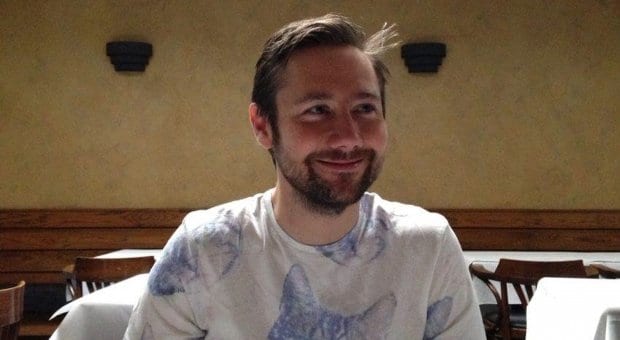You wouldn’t normally think of Jon Davies being in the “emerging” stage of his career. But the well-known curator and writer just had his fresh-faced youngster status certified to the tune of $10,000 when he received the inaugural Hnatyshyn Foundation and TD Bank Group Award for Emerging Curator of Contemporary Canadian Art.
Currently serving as associate curator of the Oakville Galleries, Davies previously spent four years with the Power Plant, bringing a distinctly queer view to the waterfront space, with the first Canadian exhibition of superstar filmmaker Ryan Trecartin, as well as the sprawling 2011 show Coming After. He’s worked as a writer/editor for TIFF and as a programmer for Inside Out, curated shows for Gallery TPW and Pleasure Dome, and written for C Magazine, the Journal of Curatorial Studies and Xtra.
Xtra: What are you hoping to say with the exhibitions and programs you put together?
Jon Davies: Every project starts from a very personal place. If I really invest myself and care about the work, audiences will feel that passion. I’m drawn to artwork that is intimate and has a diaristic or confessional quality to it, and I want to bring artists and audiences together in an intellectual, emotional and political encounter.
There has been a particular focus on queerness in your work. Is this simply because you identify as queer yourself, or is it about putting a spotlight on queer artists for the non-queer world?
I’m interested in artists manifesting queer ideas, aesthetics and politics that don’t necessarily look like you might expect them to, work that isn’t specifically about same-sex desire or gender deviance but somehow feels queer in a way that’s difficult to pin down. People Like Us: The Gossip of Colin Campbell focused on how the fictional characters he created in his videos became part of a social scene and what it means for queer artists’ works to travel across time and generations. Coming After was the result of trying to understand what it meant for my generation to grow up in the shadow of the first decade of AIDS, when queer identity was bound up in threat and death but also in radical politics. Both exhibitions were partly about how queer past haunts the present. Maybe because my background is film and video, I always come back to these questions of time and history.
Given how long you’ve been at this, how does it feel to be labelled as “emerging”?
It seems like adulthood is perpetually being deferred, so I don’t mind that label, even though I’ve been at this for a decade. I guess I was more focused on the fact the award was for curators under the age of 35. It makes me feel like a young person.


 Why you can trust Xtra
Why you can trust Xtra


